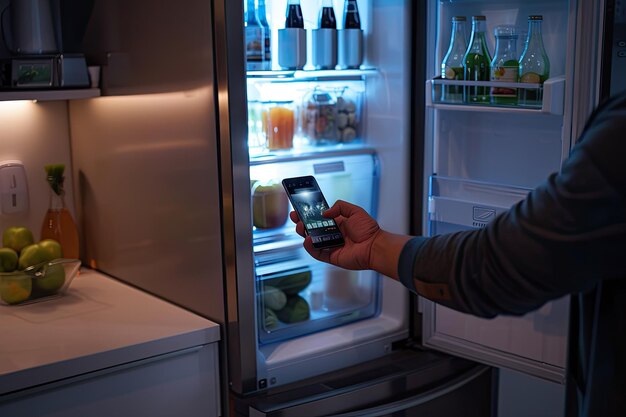How Many Amps Does Your Refrigerator Really Need? Understanding Energy Use & Efficiency
When it comes to home appliances, few are as indispensable as the refrigerator. Keeping our food fresh is crucial not only for convenience and health but also from a financial standpoint by reducing waste. However, understanding how much energy your refrigerator uses can be a bit confusing. One of the most frequently asked questions by homeowners pertains to the amperage required to run a refrigerator. This metric can help you make informed decisions about energy efficiency and household safety, ultimately enhancing your home sustainability efforts.
🤔 Why Amps Matter: A Simple Breakdown
Before diving into the numbers, it's important to understand what "amps" actually are. In electrical terms, an ampere (amp) is a unit that measures the amount of electrical current flowing through a circuit. Understanding the amperage required by your refrigerator can help in:
- Ensuring Circuit Safety: Prevents overloaded circuits that can lead to electrical fires.
- Energy Efficiency: Helps determine the energy consumption and cost.
- Installation Planning: Aids in selecting the right outlets and wiring for new installations.
Amps and Energy Use: Getting Down to Basics
H2: Factors Affecting Refrigerator Amperage
The amperage required by a refrigerator can vary depending on several factors. Here are some key considerations:
1. Refrigerator Size and Model
Larger refrigerators or those with more features (like ice makers or water dispensers) generally require more amps. Newer models, however, often use advanced technology to remain energy efficient.
2. Age of the Appliance
Older refrigerators tend to consume more electricity. Appliances over a decade old might use more than twice the energy of newer models due to inefficiencies in design and insulation.
3. Frequency of Use
How often you open the door and the ambient temperature in your home can affect how hard the motor works, impacting amperage.
4. Motor and Compressor Type
Some refrigerators have more efficient compressors that use less amp power, while others may operate using higher amperage during peak operation times.
H2: The Average Amperage of Refrigerators
Most standard refrigerators reportedly use between 3 to 5 amps when running. However, during startup, they might surge up to 5 to 7 amps or more due to the energy required to start the compressor. It's crucial to account for this startup surge when planning your kitchen's electrical setup.
Setting Up for Success: Electrical Safety and Efficiency
H3: Choosing the Right Circuit
When setting up a refrigerator, it's important to ensure that the electrical circuit can handle the necessary load:
Dedicated Circuit: A refrigerator should ideally have its own dedicated 15-amp or 20-amp circuit. This means the circuit is not shared with other appliances, reducing the risk of overloading.
Proper Wiring: Ensure that the wiring is of appropriate gauge to handle the load. The wire gauge should comply with local electrical codes, typically 14-gauge wire for a 15-amp circuit.
H3: Understanding Energy Star Ratings
Modern refrigerators often come with Energy Star ratings indicating energy efficiency. Choosing an Energy Star-rated appliance not only saves on electricity bills but can also reduce the amperage requirements over the appliance's lifecycle. These appliances are designed to be more eco-friendly and may qualify for tax rebates or incentives, depending on local regulations.
🛠️ Troubleshooting and Maintenance
H3: Signs of Electrical Issues
Knowing when your refrigerator is not operating efficiently can prevent energy overuse and further complications:
- Frequent Tripping of Breaker: Indicates overloading, needing a dedicated circuit.
- Unusual Noises: Might point to motor issues affecting amperage usage.
- Increased Energy Bills: Could signal inefficiencies in your refrigerator's operation.
H3: Maintenance Tips
Regular maintenance can ensure your refrigerator runs efficiently and safely:
- Clean Coils Regularly: Dusty coils can increase energy consumption.
- Check Door Seals: Worn seals can lead to energy loss by letting cold air escape.
- Monitor Temperature Settings: Adjust to seasonality to keep running efficiently.
What to Consider When Buying a New Refrigerator
H2: Energy Efficiency and Long-Term Savings
When the time comes to replace or purchase a new refrigerator, consider its energy efficiency:
- Annual Energy Consumption: Most units display an estimated annual energy use in kilowatt-hours (kWh), which gives an idea of its electricity cost per year.
- Feature Set Balance: While additional features can be convenient, they may also increase energy usage.
- Size Appropriateness: A unit that fits your household's needs without excess capacity will typically operate more efficiently.
🌟 Quick Reference Summary: Refrigerator Amps and Energy Tips
Here's a quick-glance table to help you remember the essentials:
| Aspect | Key Takeaway Emphasis |
|---|---|
| Average Running Amps | 3 to 5 amps, may spike to 7 amps at startup |
| Circuit Requirement | Use a dedicated 15 or 20-amp circuit |
| Energy Rating | Opt for Energy Star-rated appliances |
| Efficiency Tips | Regularly clean coils, check seals, manage settings |
| Signs of Issues | Frequent breaker trips, odd noises, high energy bills |
Refrigerators, while a constant in our daily lives, require our attention to ensure they operate safely and efficiently. By understanding the amps they use and how various factors impact these numbers, you become empowered to make better energy choices for your home. As a staple of modern living, ensuring your refrigerator runs efficiently is not only good for your wallet but the planet too. So the next time you look at your fridge, remember, knowledge keeps your kitchen—and its power – in good condition.
